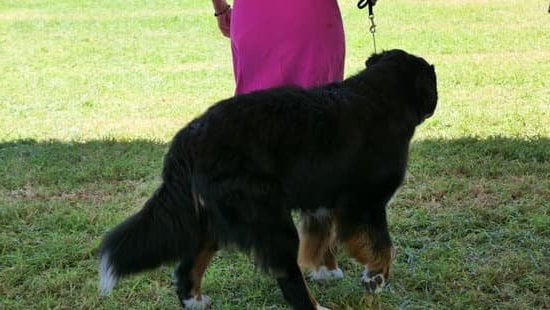Are you wondering how to train a bird dog to retrieve? Training a bird dog to retrieve is essential for hunting and field work. Understanding the natural instincts of a bird dog is crucial in developing their retrieving abilities. In this article, we will explore the various aspects of training a bird dog to retrieve, from choosing the right breed to advanced retrieving techniques.
Bird dogs are known for their hunting abilities and natural instincts, making them ideal for retrieving tasks. Understanding these instincts and natural behaviors is key to successful retrieval training. By recognizing and working with these instincts, you can effectively train your bird dog to become a skilled retriever.
Choosing the right breed of bird dog is an important first step in training for retrieval. Different breeds have different strengths and characteristics that make them suitable for retrieving tasks. Whether you have a Labrador Retriever, Golden Retriever, or other bird dog breed, understanding their unique qualities will help in tailoring your training approach.
Choosing the Right Bird Dog Breed for Retrieving
When it comes to training a bird dog to retrieve, the first step is to choose the right breed for the job. Different breeds have different natural instincts and abilities, so it’s important to select a dog that is well-suited for retrieving tasks. Here are some key factors to consider when choosing a bird dog breed for retrieving:
- Physical Characteristics: Look for a breed with strong jaws, webbed feet, and a water-resistant coat, as these physical traits are advantageous for retrieving birds from both land and water.
- Temperament: Choose a breed that is known for being eager to please, intelligent, and trainable. These characteristics will make it easier to teach the dog how to retrieve effectively.
- Instincts: Consider the natural instincts of the breed. For example, Labrador Retrievers are known for their strong retrieving instinct, while German Shorthaired Pointers excel at both pointing and retrieving.
Once you have chosen the right bird dog breed for retrieving, you can start building a strong foundation for training. This will involve basic obedience training to establish good behavior and manners in your bird dog. Teaching commands such as sit, stay, and come will create a solid framework for more advanced retrieving training later on.
After your bird dog has mastered basic obedience training, it’s time to introduce the fetch command and begin teaching retrieving techniques. Positive reinforcement is crucial during this phase of training, as it helps your bird dog understand that retrieving brings rewards and praise. By consistently using positive reinforcement methods, you can effectively teach your bird dog how to retrieve in various scenarios and environments.
As you progress with your bird dog’s retrieving training, you can move on to more advanced techniques such as establishing distance and direction in retriever training. With patience and dedication, you can overcome common challenges in retrieving training and take your bird dog’s skills to the next level through field training and hunting scenarios.
Building a Strong Foundation
Basic obedience training also helps to establish trust and respect between you and your bird dog, which are crucial elements in the successful retrieval training process. By teaching your bird dog to respond promptly to commands, you can ensure that they will be able to understand and execute retrieving instructions effectively.
In addition to basic obedience commands, it is important to focus on leash manners and socialization during the foundational stage of training. Leash manners will help prevent unruly behavior when out in the field or hunting scenarios, while socialization will ensure that your bird dog is comfortable around people and other animals. These foundational skills provide a solid base upon which you can build more advanced retrieving techniques.
Overall, building a strong foundation through basic obedience training sets the stage for successful retrieving training with your bird dog. By ensuring that they have mastered essential commands, leash manners, and socialization, you can create a positive and effective learning environment for both you and your feathered companion. From this strong foundation, you can then move on to introducing specific retrieving techniques and advanced training methods.
The Importance of Positive Reinforcement in Retriever Training
When it comes to training a bird dog to retrieve, positive reinforcement plays a crucial role in shaping their behavior and developing their skills. This method of training focuses on rewarding desired behaviors, which helps the bird dog associate retrieving with a positive experience. By using positive reinforcement, you can effectively teach your bird dog to retrieve while also strengthening the bond between you and your furry companion.
Understanding Positive Reinforcement
Positive reinforcement involves giving your bird dog something they enjoy, such as treats, toys, or verbal praise, immediately after they perform the desired behavior. For example, when teaching the fetch command, you can reward your bird dog with a treat or verbal praise each time they successfully retrieve an object. This positive association encourages them to repeat the behavior in order to receive the reward.
Benefits of Positive Reinforcement
Using positive reinforcement in retriever training not only motivates your bird dog to retrieve, but it also creates a rewarding and enjoyable learning environment for them. It helps build their confidence and enthusiasm for retrieving, making it a fun activity for both you and your bird dog. Additionally, this method fosters a trusting and respectful relationship between you and your pet, as it emphasizes encouragement and rewards rather than punishment.
Incorporating Positive Reinforcement Into Retrieving Training
To effectively use positive reinforcement in retriever training, consistency is key. Always have rewards readily available during training sessions and be timely in delivering them when your bird dog performs the desired behavior. As they become more proficient at retrieving, gradually reduce the frequency of rewards while still offering them intermittently to reinforce their skills. With patience and dedication, positive reinforcement can help transform your bird dog into a proficient retriever while strengthening your bond with them.
By incorporating positive reinforcement into retriever training, you can effectively teach your bird dog how to retrieve while fostering a loving and respectful relationship based on trust and encouragement.
Introduction to Retrieving
Bird dogs are known for their natural retrieving instincts, making them excellent candidates for training in this skill. Teaching a bird dog to retrieve is an important aspect of their overall training and can be a rewarding experience for both the dog and the owner. In this section, we will discuss the fundamentals of teaching the fetch command to a bird dog, as well as some tips for success.
The first step in training a bird dog to retrieve is to establish a strong foundation in basic obedience. This includes commands such as sit, stay, and come, which are essential for effective retrieving. Once your bird dog has mastered these fundamental commands, you can begin introducing the fetch command.
To teach the fetch command, start by introducing the bird dog to a retrieval object such as a dummy or a training bumper. Begin by allowing the dog to sniff and investigate the object, then encourage them to pick it up using verbal cues and gentle guidance. Use positive reinforcement such as treats or praise when the dog successfully retrieves the object, and be patient as they learn this new skill.
Another important aspect of teaching the fetch command is consistency. Use the same verbal cue each time you ask your bird dog to retrieve, and always reward them for successful attempts. With patience and consistent practice, your bird dog will learn to retrieve with enthusiasm and precision.
| Training Tip | Description |
|---|---|
| Establish Obedience Training First | Basic obedience commands are essential before starting retrieving training. |
| Use Positive Reinforcement | Reward your bird dog with treats or praise when they successfully retrieve an object. |
| Be Consistent | Consistency in verbal cues and rewards will help your bird dog learn the fetch command more effectively. |
Advanced Retrieving Techniques
The Importance of Distance and Direction
When training a bird dog to retrieve, it is important to establish distance and direction in their retrieving techniques. This will allow them to effectively locate and bring back game when out in the field. By teaching your bird dog to understand how to navigate different distances and directions, you can ensure that they are prepared for real-life hunting scenarios.
Teaching Your Bird Dog to Navigate Different Distances
To train your bird dog to retrieve over longer distances, start by gradually increasing the distance of their retrieves during training sessions. Begin with short retrieves close to you, then gradually increase the distance over time. Use positive reinforcement and treats to encourage your bird dog to successfully retrieve objects from farther distances. If your bird dog struggles with longer retrieves, consider using a long training lead to guide them until they become more confident in their abilities.
Establishing Directional Retrieving Skills
In addition to distance, it is crucial for a bird dog to understand directional commands when retrieving. Start by introducing simple directional commands such as “left” and “right” while practicing retrieving drills. As your bird dog becomes proficient in responding to these basic commands, you can introduce more advanced directional cues such as hand signals or whistle commands. Consistent practice and positive reinforcement will help your bird dog develop strong directional retrieving skills that are essential for successful hunting scenarios.
By focusing on establishing distance and direction in advanced retrieving techniques, you can prepare your bird dog for a variety of hunting situations where precise retrieval skills are required. With patience, consistent training, and positive reinforcement, your bird dog will develop the necessary skills to become a reliable retriever in the field.
Overcoming Common Challenges in Retrieving Training
Training a bird dog to retrieve can be a rewarding but challenging process. Just like any other training, there can be obstacles and setbacks along the way. Here are some common challenges that bird dog owners may encounter when teaching their dogs to retrieve, and how to overcome them:
- Lack of Interest: Some bird dogs may not show much interest in retrieving at first. This could be due to their individual personality or past experiences. To overcome this challenge, it’s important to make retrieving an enjoyable activity for the dog. This can be done by incorporating rewards, praise, and fun toys into the training sessions.
- Refusal to Release: Another common challenge is when a bird dog retrieves an object but refuses to release it once they bring it back. To address this issue, training the “drop it” or “release” command is essential. Positive reinforcement and consistency are key in teaching the dog to let go of the retrieved item on command.
- Distractions in the Environment: Many bird dogs have a strong prey drive and can easily get distracted by other animals or scents in their environment. This can make it difficult for them to focus on retrieving training. One way to tackle this challenge is by gradually increasing the level of distractions during training sessions, starting with minimal distractions and then gradually adding more as the dog progresses.
By recognizing these common challenges and implementing effective strategies to address them, bird dog owners can successfully train their dogs to retrieve. Patience, consistency, and positive reinforcement are crucial elements in overcoming these hurdles and ensuring a well-rounded retrieving training experience.
Taking Retrieving to the Next Level
Once your bird dog has mastered the basics of retrieving, it’s time to take their training to the next level with field training and hunting scenarios. Field training is essential for bird dogs as it simulates real-life hunting situations and helps them develop their skills in a natural environment. This section will provide guidance on how to transition from basic retrieving exercises to more advanced field training and hunting scenarios.
One of the key aspects of field training is introducing your bird dog to different terrains and environments. This can include fields, woods, marshes, and water bodies. It’s important to expose your bird dog to these various settings so they can become comfortable retrieving in different conditions. Additionally, field training allows the bird dog to practice retrieving over longer distances and obstacles, which is crucial for real-life hunting scenarios.
Hunting scenarios are also an integral part of a bird dog’s education. Introducing your bird dog to actual hunting situations allows them to apply their retrieving skills in a practical setting. This can involve tracking down game birds, flush and retrieve exercises, as well as practicing steady retrieves in the presence of distractions. It’s essential for bird dogs to experience these scenarios under controlled conditions before participating in actual hunts.
| Field Training Tips | Hunting Scenario Exercises |
|---|---|
| Introduce different terrains | Track down game birds |
| Practice retrieving over longer distances | Flush and retrieve exercises |
| Expose the dog to various environments | Steady retrieves in the presence of distractions |
Conclusion
In conclusion, training a bird dog to retrieve is a rewarding and fulfilling experience that requires dedication, patience, and consistency. Understanding the natural instincts of bird dogs and choosing the right breed for retrieving are crucial first steps in the training process. Building a strong foundation through basic obedience training and incorporating positive reinforcement techniques will set the stage for successful retriever training.
Introducing the fetch command and advancing to techniques that establish distance and direction are essential in developing a well-rounded bird dog. It’s important to overcome common challenges in retrieving training, such as distractions or reluctance, with patience and perseverance. Additionally, taking retrieving to the next level by incorporating field training and hunting scenarios will further enhance your bird dog’s skills.
As you celebrate milestones in your bird dog’s retrieving journey, it’s important to continue their education to maintain their skills. Consistent practice, reinforcement, and exposure to various retrieving scenarios will help solidify their abilities. With dedication and ongoing education, you can have confidence in your well-rounded bird dog’s retrieving capabilities as they accompany you on future hunting adventures.
Frequently Asked Questions
What Is the Best Way to Train a Bird Dog?
The best way to train a bird dog is through positive reinforcement techniques, using rewards and praise to reinforce desired behaviors. Consistent training, patience, and understanding the breed’s natural instincts are key.
How Do You Teach a Gundog to Retrieve?
Teaching a gundog to retrieve involves starting with basic obedience training, then gradually introducing the concept of retrieving using toys or dummies. Building on their natural hunting instinct and reinforcing the retrieve command is important.
Is It Ever Too Late to Train a Bird Dog?
It’s never too late to train a bird dog, but it may require more time and patience if starting with an older dog. Older dogs can still learn new commands and behaviors with consistent training and positive reinforcement.

Welcome to the blog! I am a professional dog trainer and have been working with dogs for many years. In this blog, I will be discussing various topics related to dog training, including tips, tricks, and advice. I hope you find this information helpful and informative. Thanks for reading!





